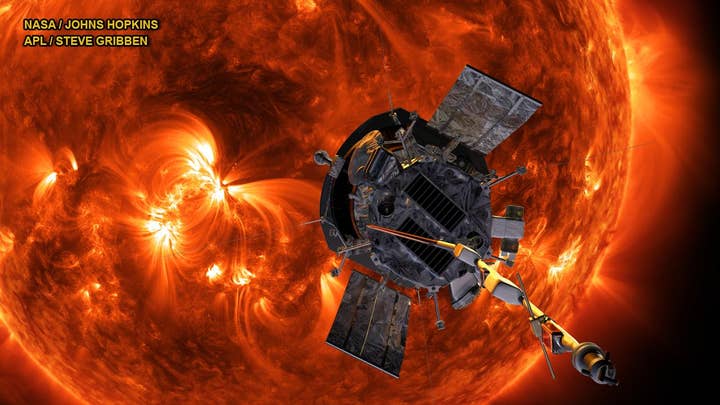Fox News Flash top headlines for July 25
Fox News Flash top headlines for July 25 are here. Check out what's clicking on Foxnews.com
Rolling waves of plasma known as "solar tsunamis" could be causing the sudden end of solar cycles, according to scientists.
Researchers identified so-called "terminator events" that mark the end of sunspot cycles, which could explain the process of how the sun transitions from periods of lower activity to higher activity.
The study, which was published in the journal Solar Physics, examined almost 140 years of data collected from the ground and by NASA's Solar Terrestrial Relations Observatory and Solar Dynamics Observatory, two spacecraft that have been staring at the sun for years.
According to CNET, as researchers observed UV light coming from the sun's surface, they saw how bright points of light would appear at high latitudes and move toward the sun's equator over a period of decades.
SCIENTISTS DISCOVER STUNNING CORAL REEF CORRIDOR IN GULF OF MEXICO

The sun's heat is extreme. (NASA/GSFC/SDO)
Once the bright points disappear, another huge burst of activity would take place, which marks the start of the next sunspot cycle, researchers said.
"The evidence for terminators has been hidden in the observational record for more than a century, but until now, we didn't know what we were looking for," Scott McIntosh, an NCAR scientist who worked on both studies, said in a press statement.
Scientists have long wanted to better understand the sun's cycles. When solar activity spikes, flares, sunspots and solar storms can impact satellites stationed near Earth and space weather.
GREAT HORNED OWL DISCOVERED COMPLETELY COVERED IN OIL
NASA's Solar Parker Probe is currently taking pictures and gathering information from inside the sun's atmosphere.


